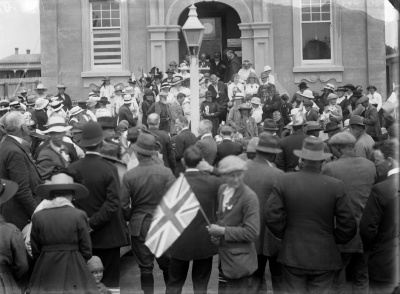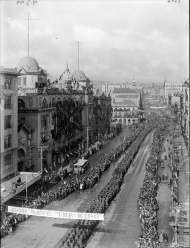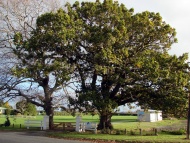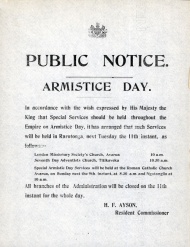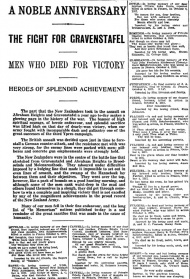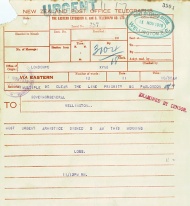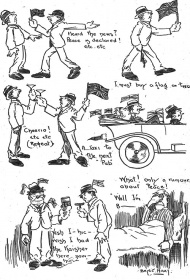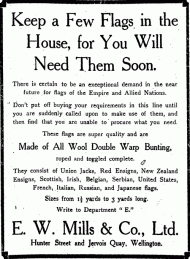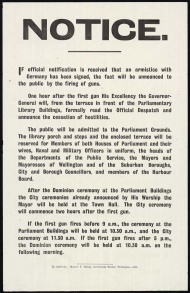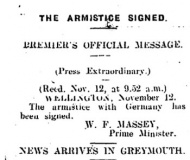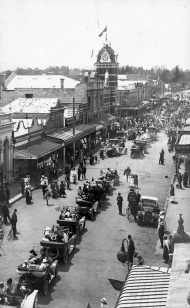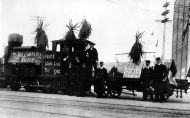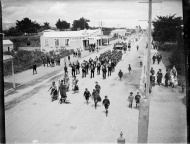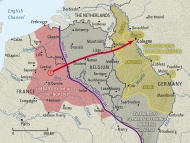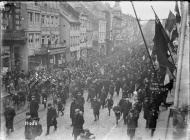Events In History
-
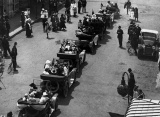 11 November 1918Armistice Day
11 November 1918Armistice DayThe 11th hour of the 11th day of the 11th month was the moment when hostilities ceased on the Western Front in 1918, following the signing of an armistice. Read more...
Articles
Armistice Day
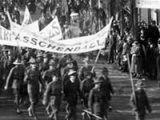
After four terrible years, fighting in the First World War finally ended with the signing of an armistice between Germany and the Allies on 11 November 1918. New Zealanders celebrated enthusiastically, despite having recently celebrated the surrenders of the three other Central Powers and the premature news of an armistice with Germany.
-
Page 2 – Pre-Armistice Day surrenders
From 1 October 1918 New Zealanders progressively celebrated the surrenders of Bulgaria, the Ottoman Empire and Austria-Hungary before the armistice with Germany on 11 November
-
Page 3 – False armistice
On 7 November 1918 the Prime Minister assured the public - following rumours to the contrary - that the government was not holding back news of a German surrender. The next
-
Page 4 – Armistice Day celebrations
The news everyone had been waiting for finally arrived on the morning of Tuesday 12 November 1918. Germany had surrendered and signed an armistice with the Allies the previous
-
Page 5 – Armistice Day and the flu
The influenza pandemic dampened some armistice celebrations, particularly in Auckland.
-
Page 6 – New Zealanders overseas
The New Zealand Division official history records that those in France received the news of the armistice ‘generally in a matter of fact way, totally devoid of any
-
Page 7 – New Zealand in 1918
Some facts and stats about New Zealand in the year the First World War ended
-
Page 8 – Further information
Discover more about Armistice Day.
1919 peace celebrations
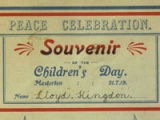
Although the guns fell silent on 11 November 1918, peace wasn't officially proclaimed until 28 June 1919, when the Treaty of Versailles was signed. In July 1919 communities throughout New Zealand and the Empire celebrated peace with elaborate public events over several days.
-
Page 2 – Planning gets under way
Almost immediately after the armistice, communities throughout New Zealand and the Empire began to plan elaborate celebrations that would mark the official end of the war in a
1918: Spring Offensive and Advance to Victory
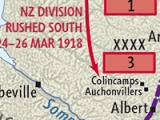
In 1918, a series of major German and Allied offensives broke the stalemate of trench warfare on the Western Front, resulting in the collapse of the German Army and the end of the war within the year. New Zealand units played an important part in the Allies' final push for victory.
- Page 1 - 1918: spring offensive and advance to victoryIn 1918, a series of major German and Allied offensives broke the stalemate of trench warfare on the Western Front, resulting in the collapse of the German Army and the end of the
Pacific aftermath
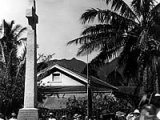
Participation in the First World War changed Pacific Islanders' lives. Returning servicemen had seen the world.
- Page 2 - Peace celebrations in the PacificNews of the Armistice in Europe in November 1918 came swiftly to Rarotonga via its new wireless
New Zealand and Le Quesnoy

It was the New Zealand Division's final action of the First World War. On 4 November 1918, just a week before the Armistice was signed, New Zealand troops stormed the walled French town of Le Quesnoy. The 90 men killed were among the last of the 12,483 who fell on the Western Front.
- Page 5 - Battle accounts, Private NimmoCaptain James Matheson Nimmo joined 3rd Battalion, 3rd New Zealand (Rifle) Brigade on 27 September
The Ottoman Empire
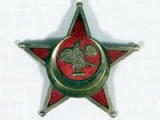
Few Kiwis today know much about one of our main First World War enemies, the Ottoman Empire - a sophisticated but often forgotten empire whose soldiers fought against New Zealand troops for four years in the Gallipoli, Sinai and Palestine campaigns.
- Page 5 - Ottoman Empire at warHow the Ottoman Empire fared during the First World War
Related keywords
- postal service
- opunake
- public service
- WW1 home front
- auckland city
- karaka
- peace celebrations
- turkey
- casualties
- WW1
- cook islands
- influenza pandemic
- passchendaele offensive
- memorials
- le quesnoy liberation
- germany
- war brides
- telegraph
- communications
- doctors
- disease
- training camps
- niue
- pacific peoples
- cartoon
- flags
- advertising
- newspapers
- holidays
- central powers
- bulgaria
- ottoman empire
- austro-hungarian empire
- western front
- WW1 stories
- german army
- prisoners of war
- letters
- greymouth
- masterton
- parades
- transport
- railways
- trains
- gore
- health
- epidemic
- levin
- clothing
- maps
- WW1 maps
- belgium
- pioneer battalion
- christchurch
- ottoman army
- balkans
- sinai campaign
- palestine campaign
- gallipoli campaign
- russia
- salonika campaign
- dardanelles attack
- housing
- religion
- population
- alcohol
- six oclock swill
- education
- battle of bapaume
- united states
- british army
- french army
- weapons
- victoria cross
-
Main image: Peace celebrations in Ōpunake

